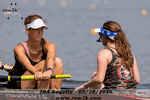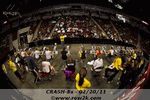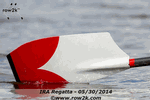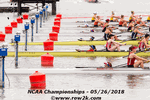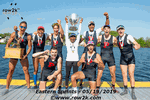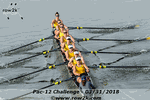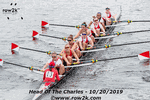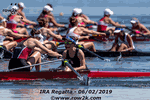Cross Training Pt 1 - Frequency, Type, Favorite Lifts
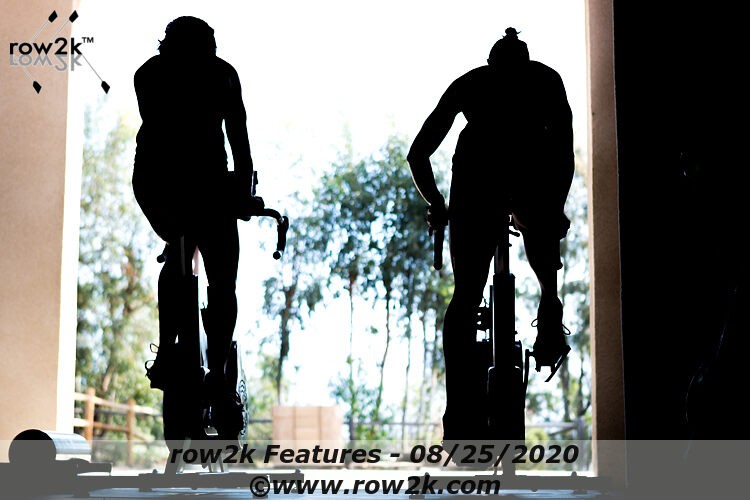
Following the cancellation of the 2020 spring racing season, row2k solicited the collegiate coaching community to engage in a variety of high-level topics within the profession. We submitted over sixty questions across a dozen topics and thank the coaches and staffs that found time to contribute their thoughts during this stressful time.
This week we focus on the topic of Cross Training with the first of two questions:
HOW MUCH CROSS TRAINING DO YOU FIND HELPFUL IN A GIVEN WEEK FOR HEALTHY ATHLETES AND WHAT GENERAL TYPES OF CROSS TRAINING HAVE YOU FOUND MOST EFFECTIVE?
KERRI BRACE – CANISIUS WOMEN
To me, cross training is crucial to the longevity of the student-athlete and the long-term success of the team. During our winter training season, in a typical week I like to prioritize at least 2-3 days of cross training, in addition to our three scheduled lifts with the strength & conditioning team. I believe it’s important to have variation, not only for the physical health of the student-athlete, but also for their mental health.
Obviously, running is key to help build their endurance off the erg. While I don’t equate running pace with boat speed, I believe it’s important to have the student-athletes see that your ability to move your body weight will go a long way. Running can also be an outlet, like the erg is for others. In Buffalo, NY, getting a chance to get fresh air in your lungs, outside the erg room, allows an opportunity to prepare for those early April race days.
Another source of endurance building cardio I like to use is the pool. Just like running, I don’t expect everyone to be a proficient swimmer, but it is a place that can help the rowers work on their breathing, patience and fluidity. We also can have some fun with some overhead medicine ball passing, sharks and minnows and good old fashion relay racing.
We recently bought some Concept 2 erg bikes and have begun to learn what an incredible benefit they will be to our program moving forward. Lastly, we use our community. Each Wednesday in Buffalo (and in many other cities), a community-wide fitness meet-up (November Project) is held about a mile from campus. It’s a great way to get a good mix of core, agility, running and teamwork in. We don’t attend every week, but it’s nice to get off campus once in a while, especially during a long winter training.
GABE WINKLER – OREGON STATE MEN
The erg is pretty monotonous, as everyone knows. In order to keep things motivated and fresh, we have at least 2 lifts a week. In the fall, especially, we have a stadium run each week. To get really good at moving the boat, you should probably spend the most time actually in the boat, but there is no one way to get in good shape.
Doing other workouts outside of the boats makes you a much more well-rounded athlete and you learn something from each outing. Corvallis has some fantastic short hikes that not only offer some physical benefit but get the team out together.
JENN LANGZETTEL – DUQUESNE WOMEN
Cross training is about a third of our training. It is important for the body and the mind to get a break from the erg/rowing. Nothing can really take the place of running in cross training. Running is a great cardiovascular workout, works the legs, and honestly sucks. You can learn a lot about pushing when it gets hard from running and can see significant erg improvement from the mental and physical benefits. Spinning is also beneficial, but I still feel that running is number one for cross training.
BART THOMPSON – ADRIAN
I believe that lifting is a great way to grow the athletes’ strength and explosive power, if done correctly. I also believe that many athletes can benefit from yoga, both for its ability to increase mobility but also from the meditational part of it.

From an aerobic side I don’t think that anything that we have access to is as good as rowing. Cross-country skiing is great, but that’s not something we’re able to do. Ultimately, though, at different times of the year we implement an indoor bike spin or allow the athletes to do a “You Pick” workout where they can bike or run, predominantly because of the mental benefits. Sitting on an erg all winter isn’t easy, so for many athletes an opportunity to cross-train is a valuable mental break from the erg.
KEMP SAVAGE – EASTERN MICHIGAN WOMEN
We do about 20% of our steady state indoors. Through cross-training we have found this keeps a lot of the load of the long miles off the athletes while still getting the aerobic training stimulus. We focus on biking and running as our main forms of cross training. We weight lift three hours a week in season.
ANONYMOUS HEAD COACH
A healthy athlete in our program will cross-train three times a week. If an athlete is injured, then this number will usually increase substantially.
DAN ROOCK – DARTMOUTH LIGHTWEIGHT MEN
Lots. With cycling, Nordic skiing, and circuit training being the most effective. Running too.
ALICEA STRODEL – MINNESOTA WOMEN
It depends on the time of year. Right now (May ‘20), we are suggesting that most of their training is cross training. As we progress into summer, erging and (hopefully) rowing will become about 60% of suggested training. While in school, 80% of our training is rowing specific and that goes up to 90% during racing season.
BRIAN DAWE – TUFTS
During the competitive season our students get more from resting than from extra workouts. Building up in the fall and over the winter, when they are on their own time, is almost all erging, with lifts and body circuits adding another four practices each week.
MOST PROGRAMS HAVE INTEGRATED WEIGHTLIFTING TO THEIR TRAINING, WHICH LIFTS HAVE YOU FOUND TO BE THE MOST BENEFICIAL FOR ROWERS AND WHY?
ALICEA STRODEL – MINNESOTA WOMEN
I’m currently in love with pull-ups because many women aren’t confident doing them. They are great for lat extension and contraction and opening the rib cage. Plus, when our women start punching them out, they feel like badasses. Also, credit to Will Hicks on this one, a hanging dumbbell squat on a platform encourages great posture in a “seat to feet” position.
ANONYMOUS HEAD COACH
We train for speed and power in the weight room. We focus on deadlifts, squats (front and back), and cleans as well as a substantial amount of focused core work. Focusing on core allows us to brace our core better off the catch end of each stroke. If the core is strong, then we can connect the power generated from the lifts to the oar.
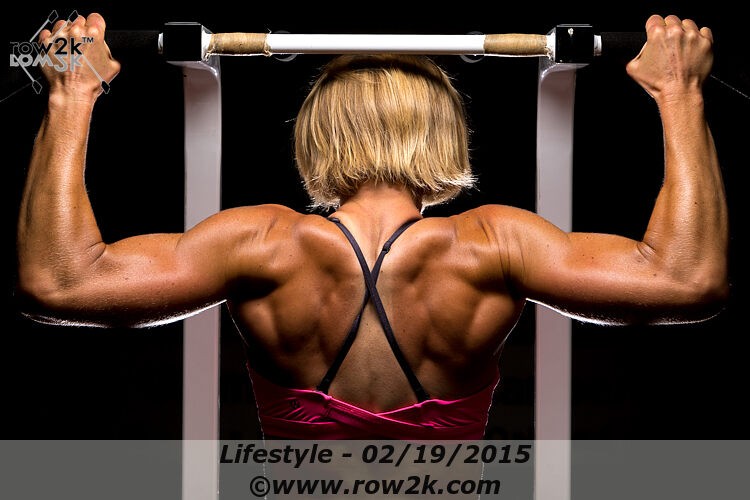
JENN LANGZETTEL – DUQUESNE WOMEN
Keeping it simple is most effective. Squats, lunges, deadlifts, cleans, bent over rows, etc. Changing it up a little keeps it interesting and keeps the body from plateauing but trying to get too creative or get into anything that takes a lot of time to teach takes time away from training and can potentially cause injury if not executed well.
DAN ROOCK - DARTMOUTH LIGHTWEIGHT MEN
Romanian dead lifts and wide-grip dead lifts. RDLs when done correctly train the body drive while keeping the lumbar spine safe and strong. Wide-grip dead lifts train the leg-to-body connection and arm hang, also keeping the lumbar spine safe and strong, if done correctly.
KERRI BRACE – CANISIUS WOMEN
I give a lot of credit to the strength coach I’ve worked with the last couple years. Most strength & conditioning coaches haven’t worked with the sport of rowing and need to learn what it is we’re coaching to strengthen our team and grow their power. The core stability is key before moving onto the water and training, as well as the explosiveness through the legs.
In our on-water seasons, we lift two times a week. In our off-water seasons, we add a third day to allow for circuit work, agility and lengthened stretching. We have seen a great deal of increased speed on the erg due to our strength & conditioning coach, as well as their attention to technique and detail.
BART THOMPSON – ADRIAN
For the sake of developing a rower’s strength I don’t think you can beat the classic lifts: deadlift, RDL, squats, etc. However, I also think that lifting is a great time to develop the “antagonist” muscles to those that we commonly use in rowing, like the chest for example. Rowing is a repetitive motion sport, and if we don’t maintain the muscles not used in rowing, we run the risk of increasing the possibility of our athletes getting injured.
BRIAN DAWE – TUFTS
Free weights are the best when properly taught and supervised. One year we were able to add the snatch to the dead lifts, high pulls, and clean variations that were the mainstay. I have always thought that women rowers need more upper body strength – this has led to more stabilization training to support those unusual loads. It’s always been full range of motion that can be controlled over pounds lifted.
GABE WINKLER – OREGON STATE MEN
Nobody goes to the gym and says, “I’m going to go in and hit the BANDS!” However, using the exercise resistance bands really helps with injury prevention and the small muscle balance. Squatting 300 pounds can show some power but what is that power if your hip mobility is awful. It takes a smart strength coach to integrate the flexibility and the complete body into the workout program.
KEMP SAVAGE – EASTERN MICHIGAN WOMEN
We use a lot of unilateral work to help offset the twist involved in sweep rowing. We really try to help find a muscle balance both left and right as well as dorsal and ventral. So, a lot of one arm rows/presses, and lunges or split squats to balance right and left leg strength.
If you enjoy and rely on row2k, we need your help to be able to keep doing all this. Though row2k sometimes looks like a big, outside-funded operation, it mainly runs on enthusiasm and grit. Help us keep it coming, thank you! Learn more.
Comments | Log in to comment |
There are no Comments yet
| |
- Bont Rowing
- Calm Waters Rowing
- Concept 2
- Craftsbury Sculling
- The Crew Classic
- CrewLAB
- Croker
- Dad Vail Regatta
- Durham Boat Co.
- Empacher
- Faster Masters
- Filippi
- Fluidesign
- h2row.net
- HUDSON
- Live2Row Studios
- Nielsen-Kellerman
- Oak Ridge RA
- Peinert Boat Works
- Pocock Racing Shells
- Race1 USA
- RowKraft
- Rubini Jewelers
- Vespoli USA
- WinTech Racing
- Bont Rowing
- Calm Waters Rowing
- Concept 2
- Craftsbury Sculling
- The Crew Classic
- CrewLAB
- Croker
- Dad Vail Regatta
- Durham Boat Co.
- Empacher
- Faster Masters
- Filippi
- Fluidesign
- h2row.net
- HUDSON
- Live2Row Studios
- Nielsen-Kellerman
- Oak Ridge RA
- Peinert Boat Works
- Pocock Racing Shells
- Race1 USA
- RowKraft
- Rubini Jewelers
- Vespoli USA
- WinTech Racing



